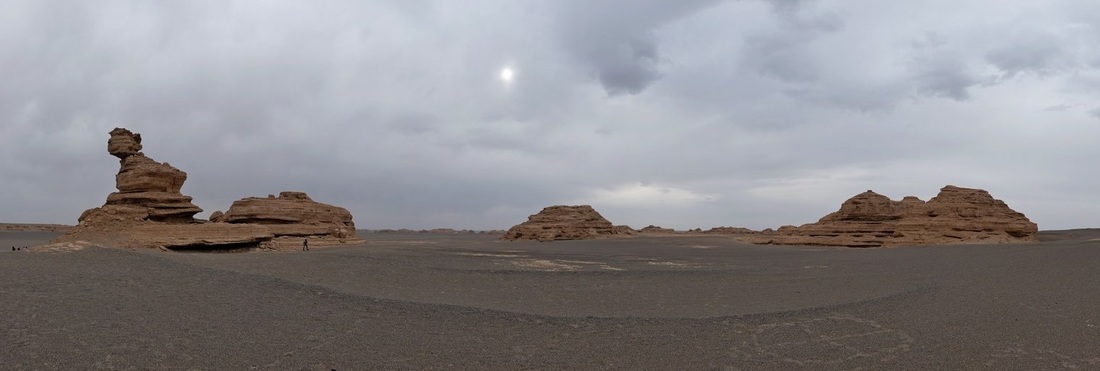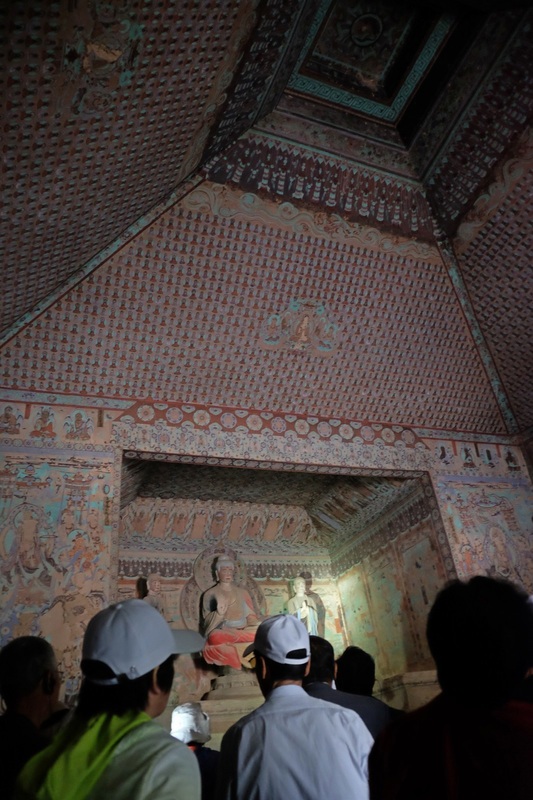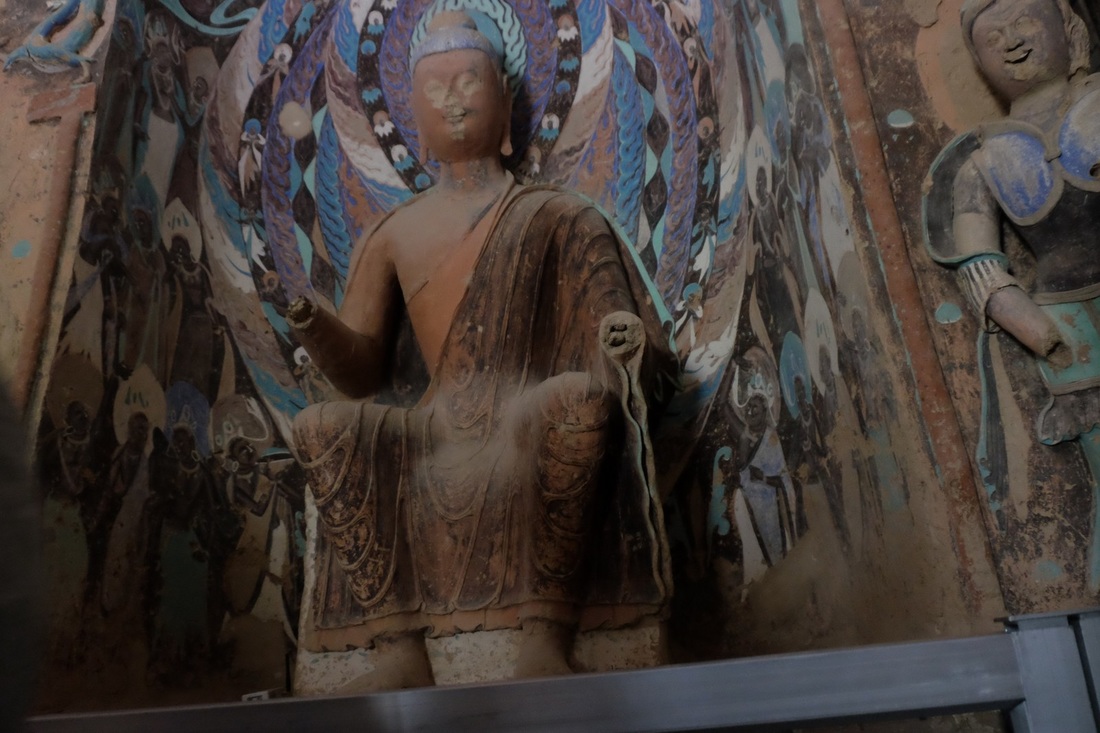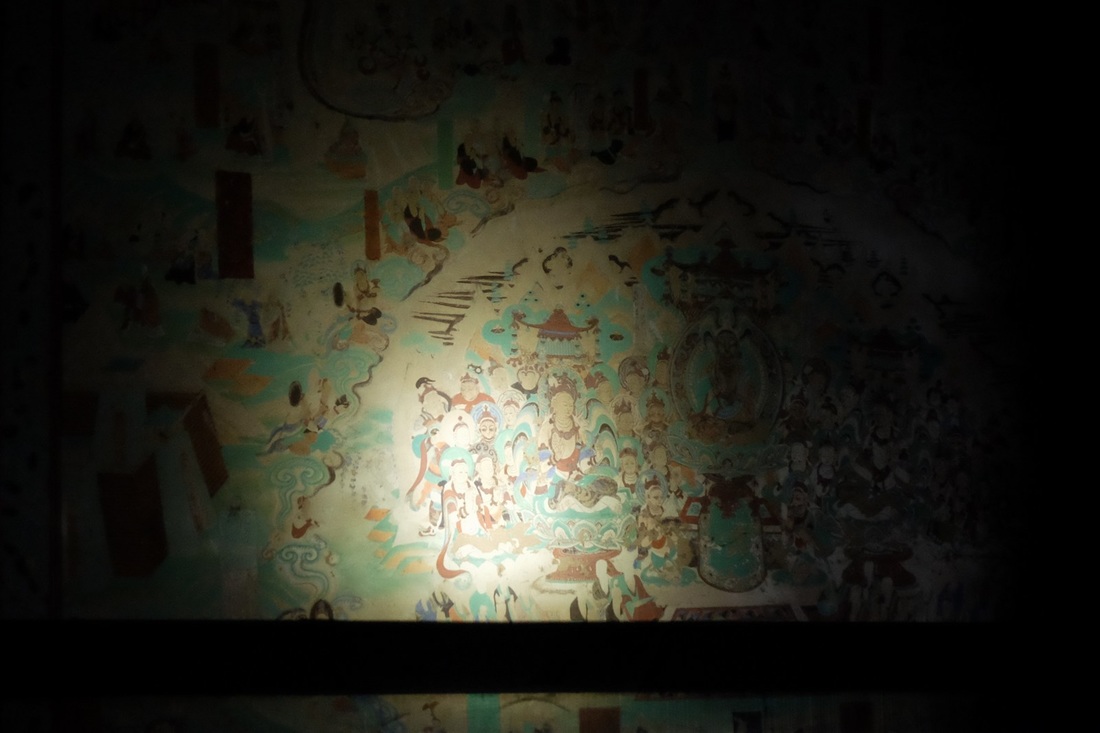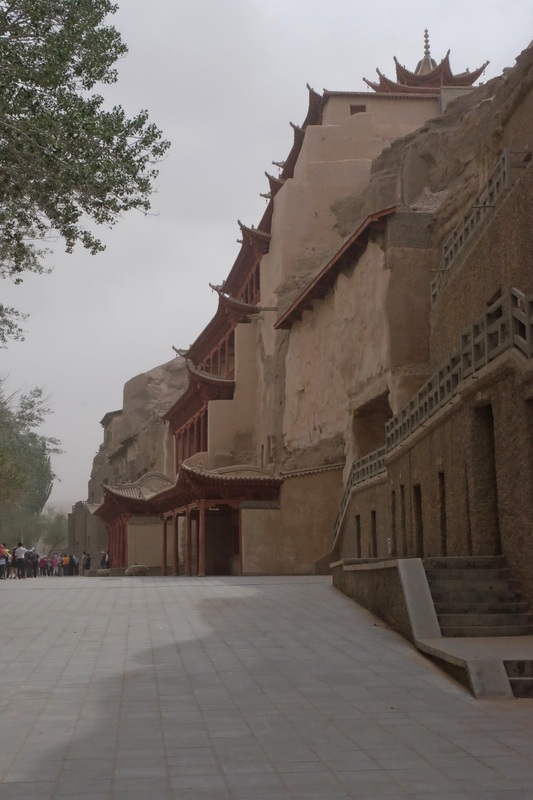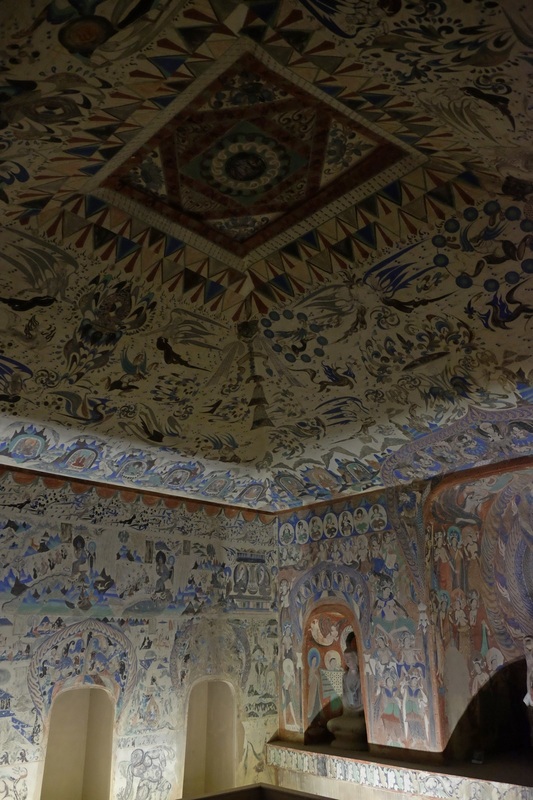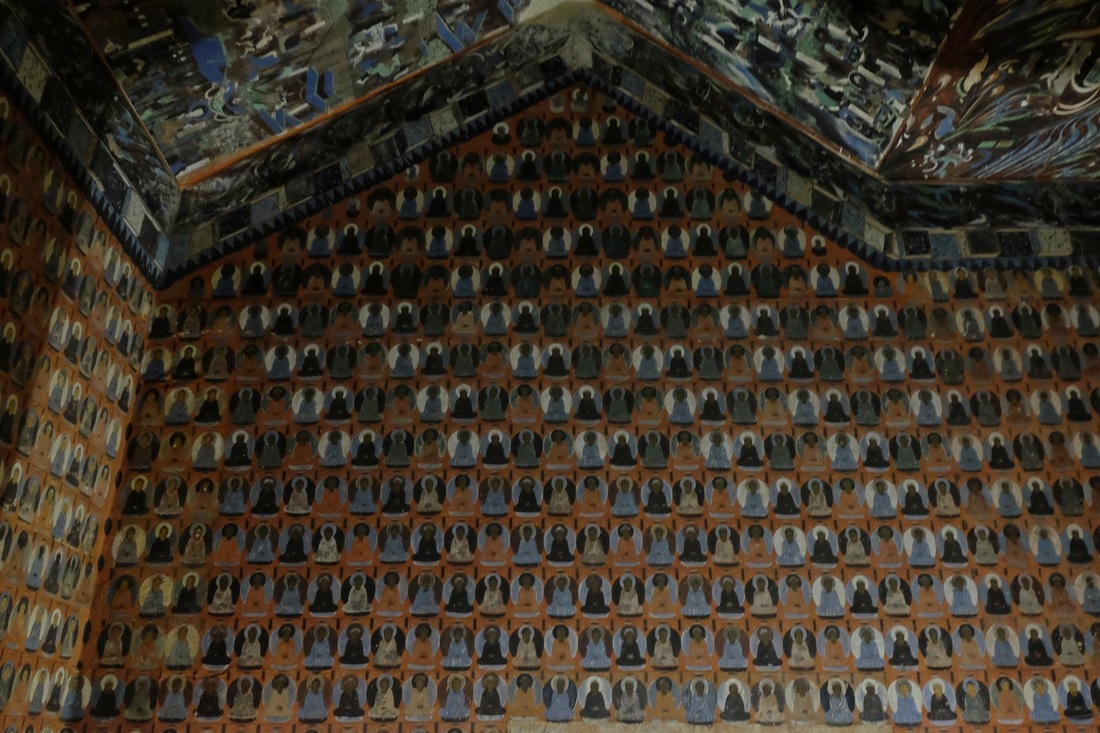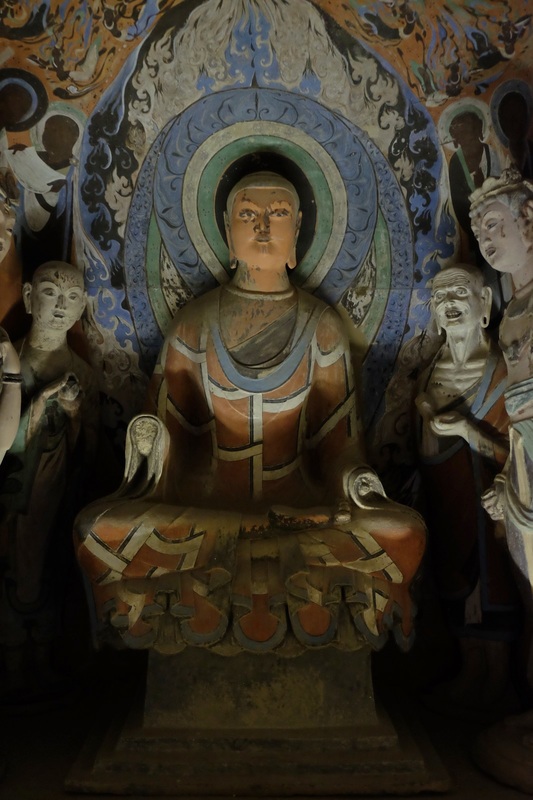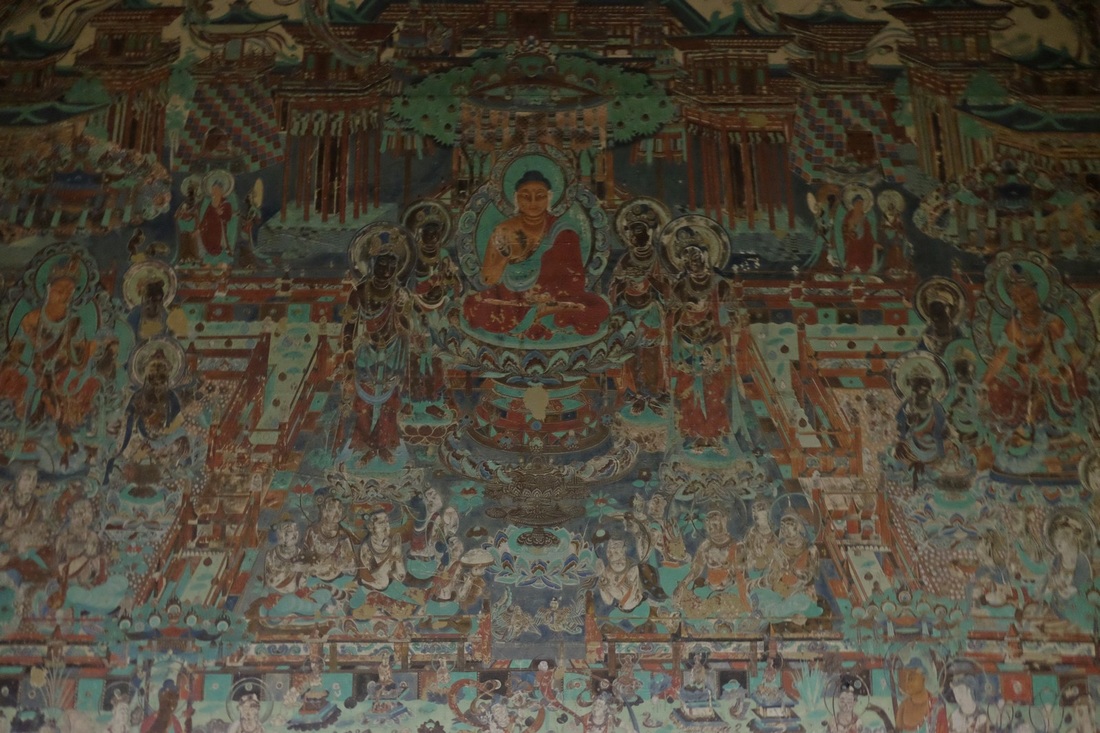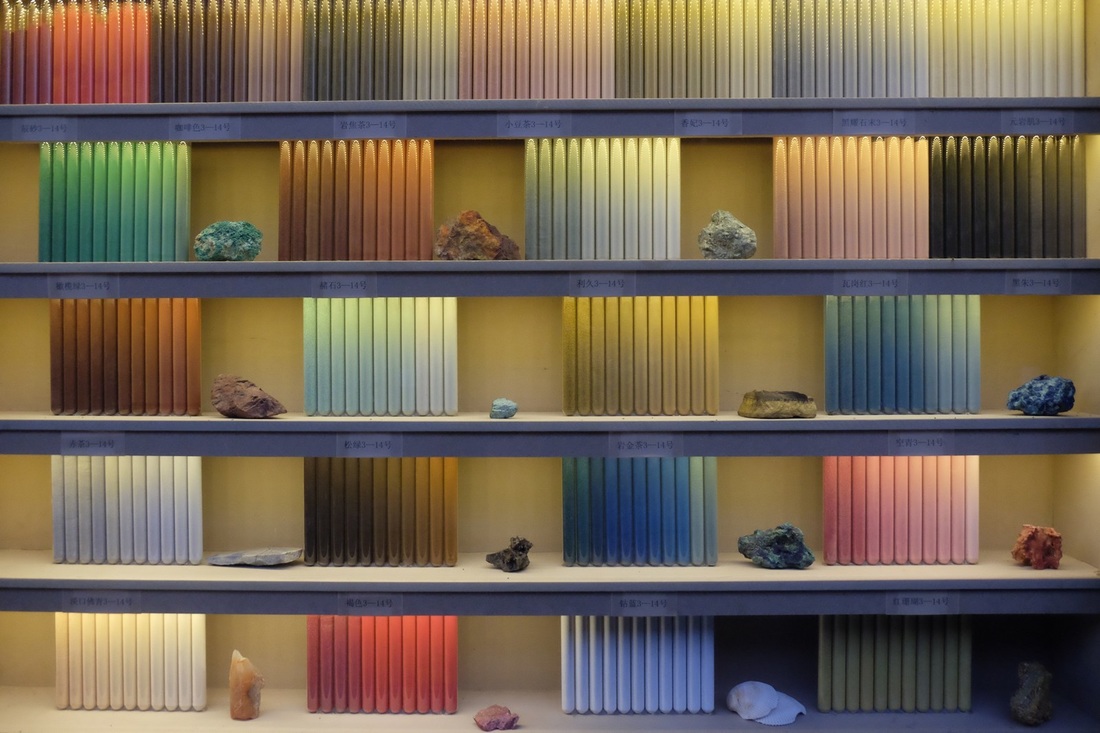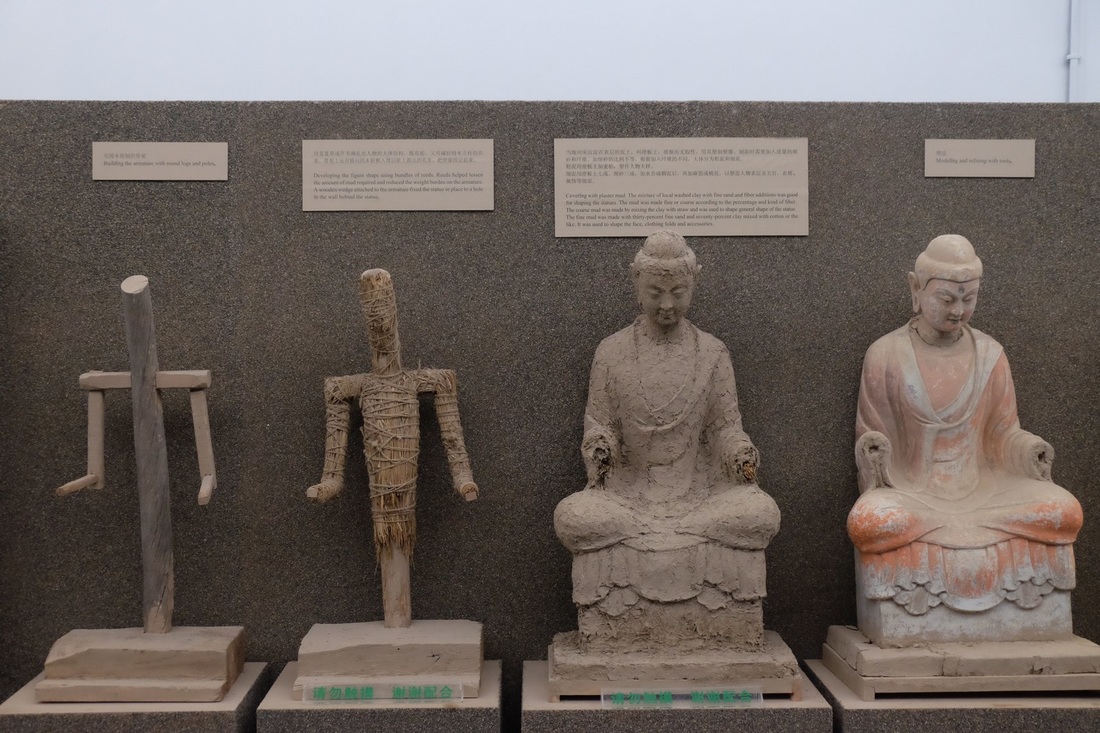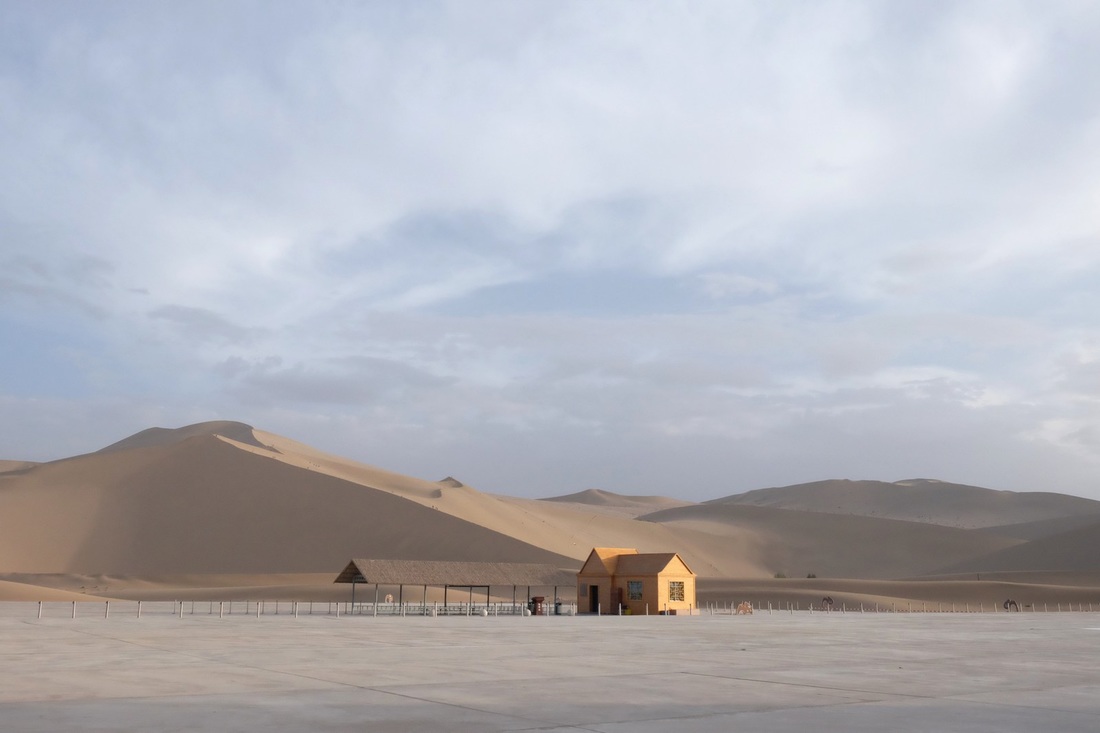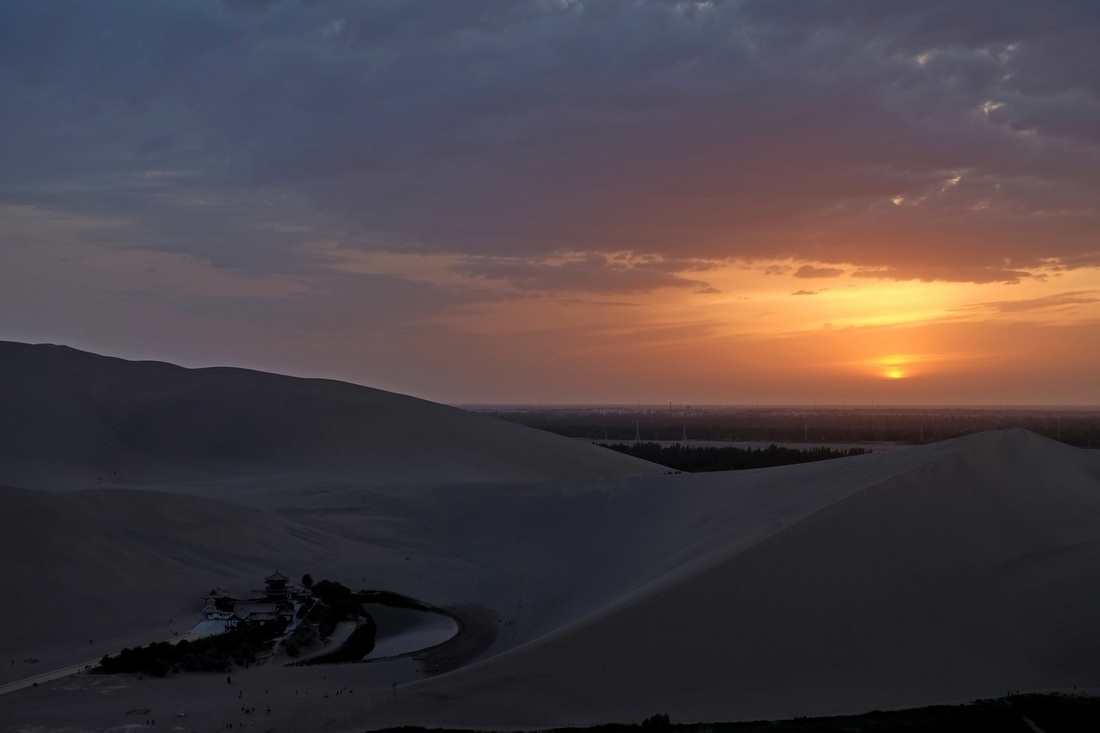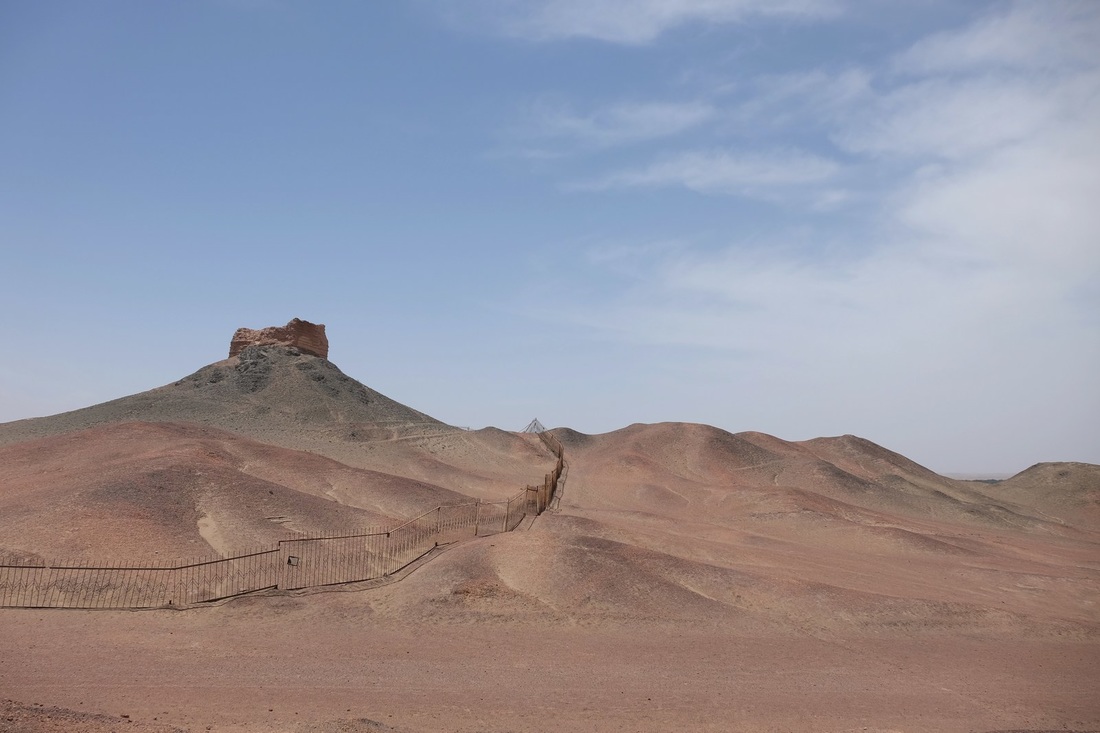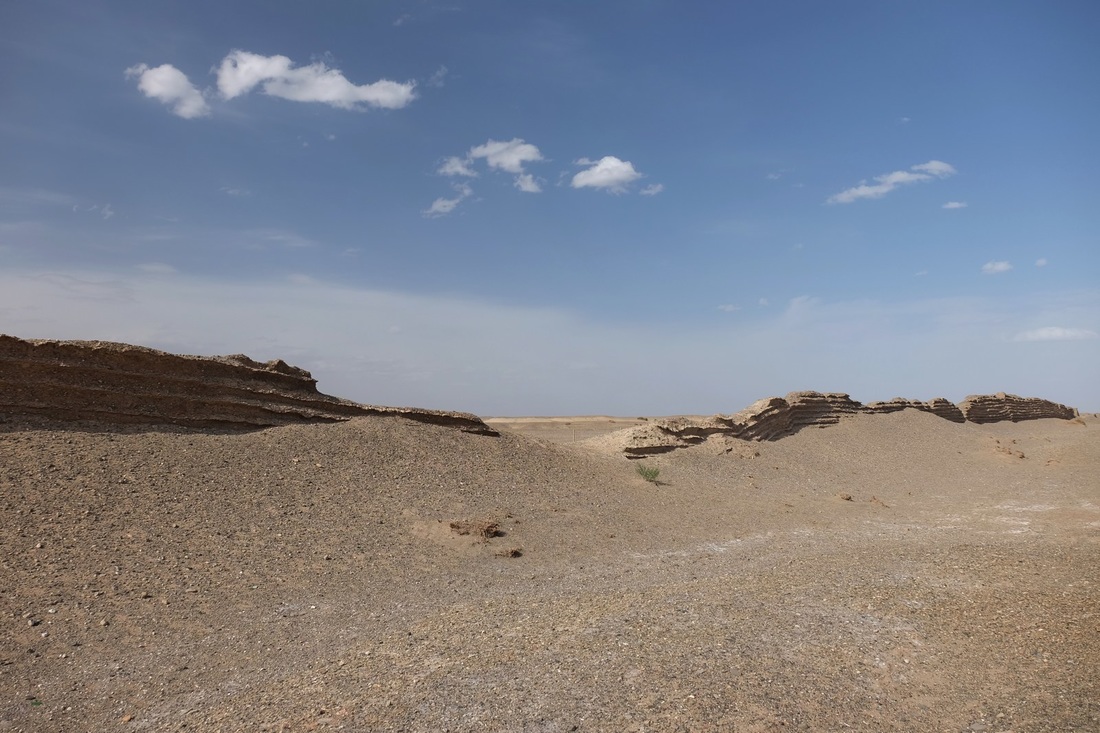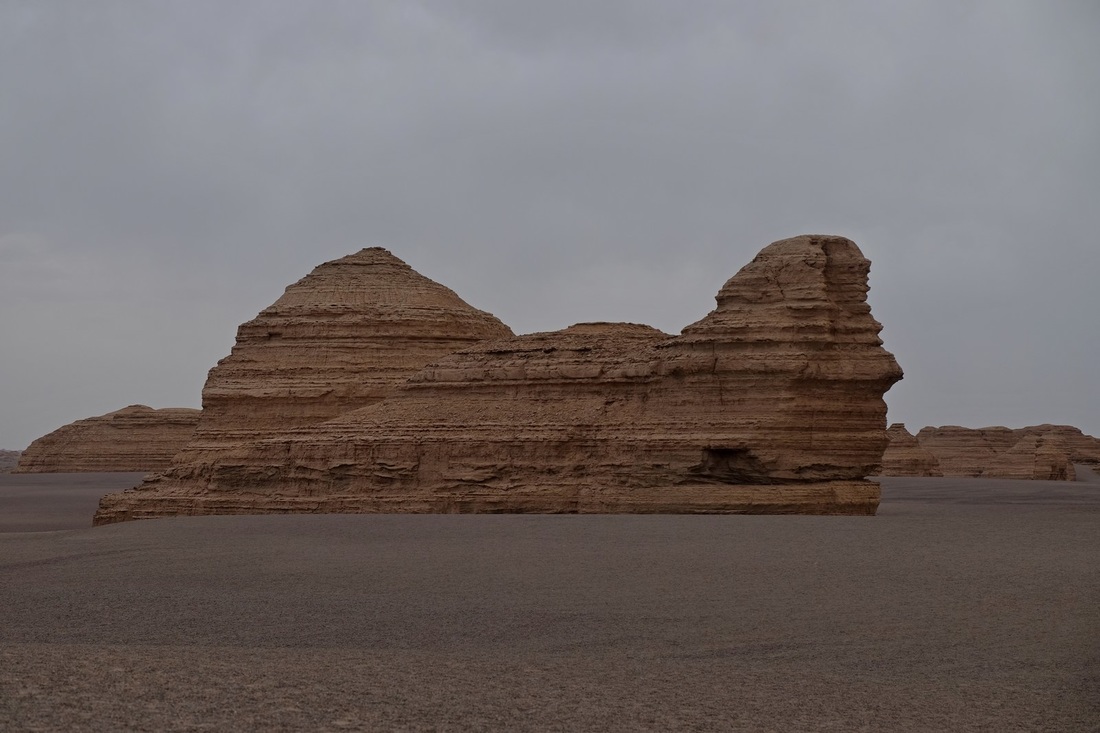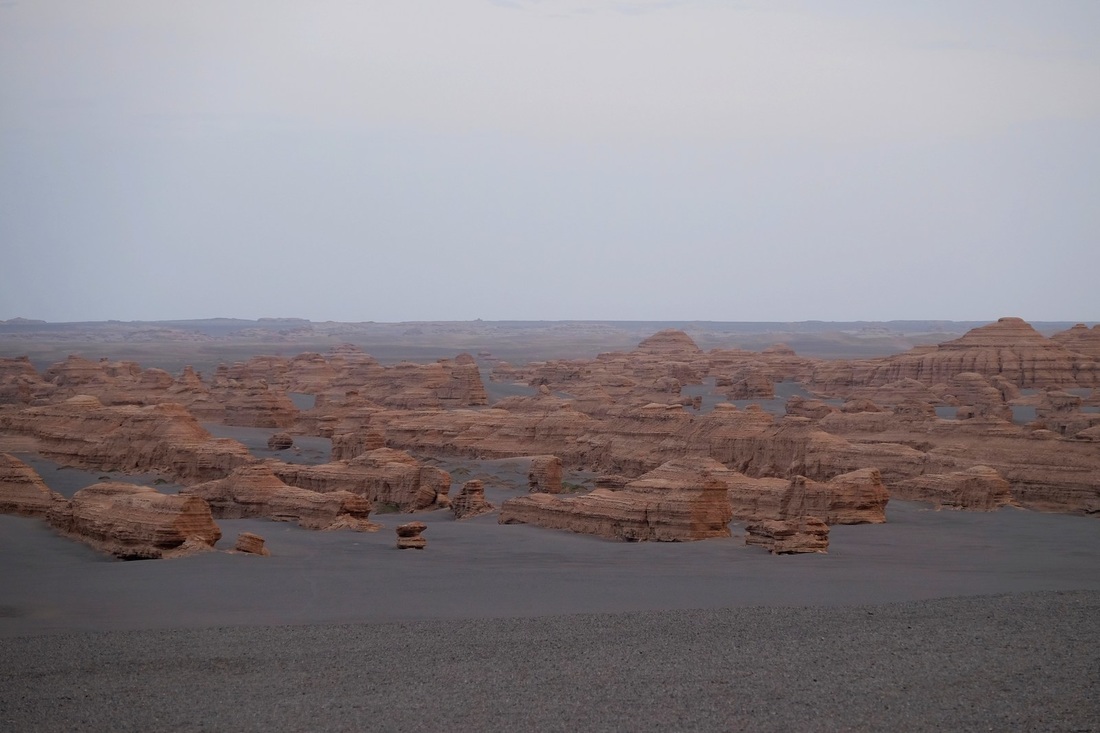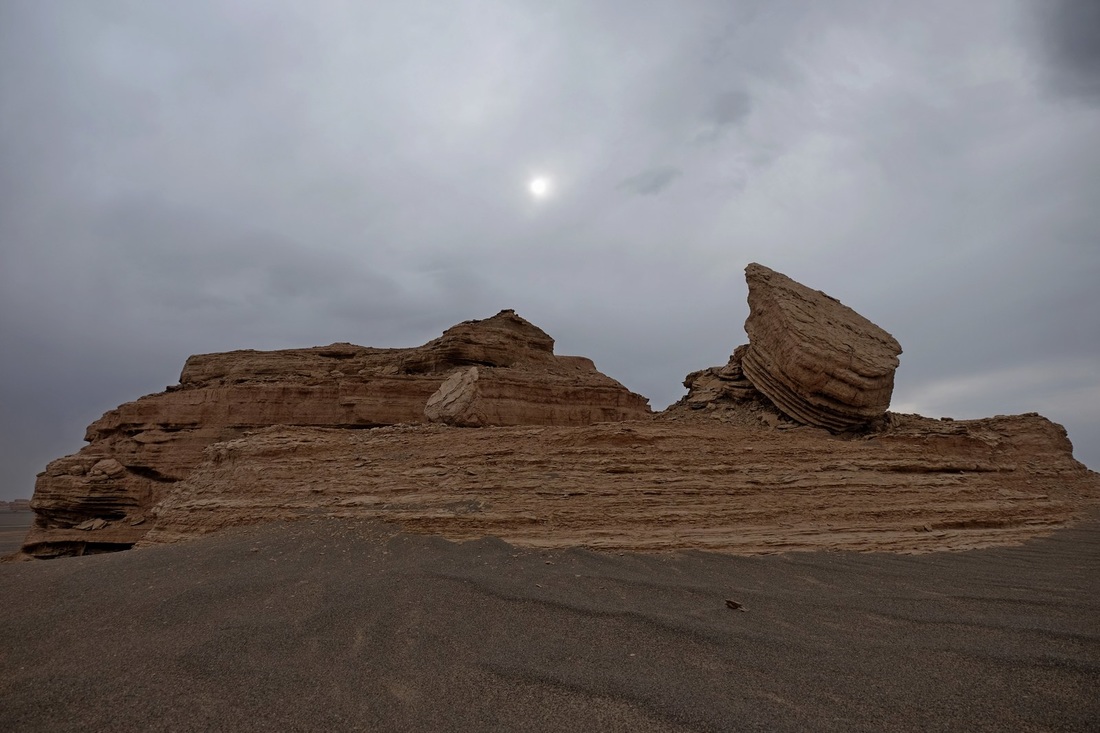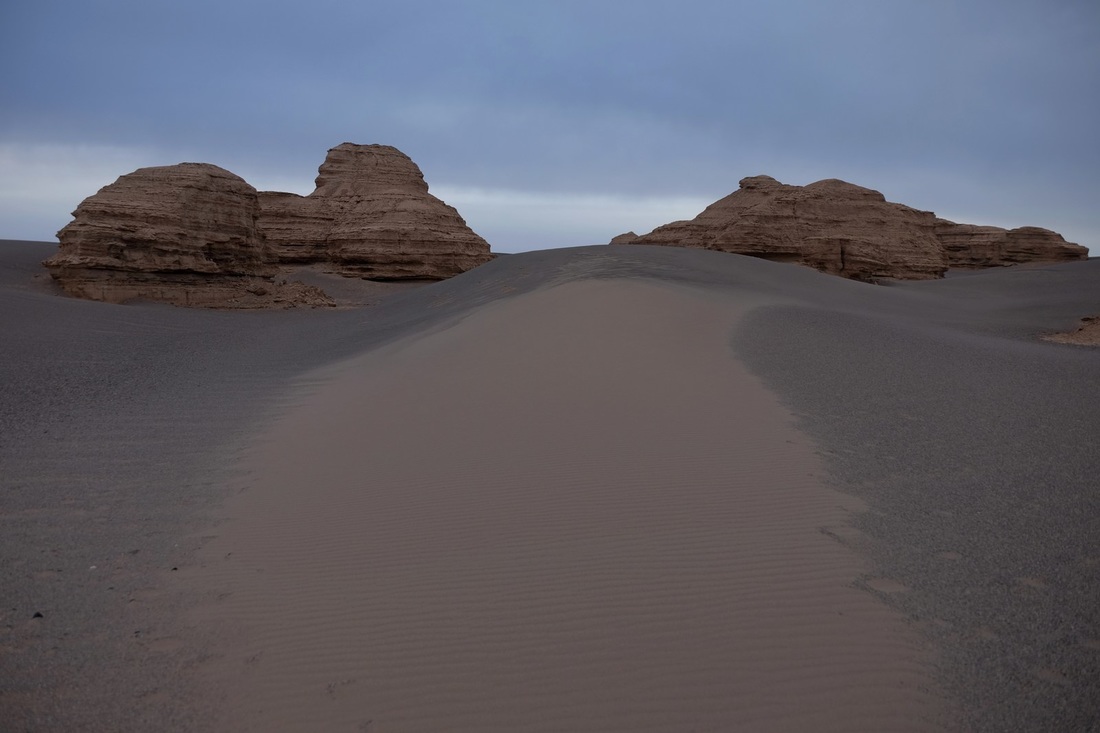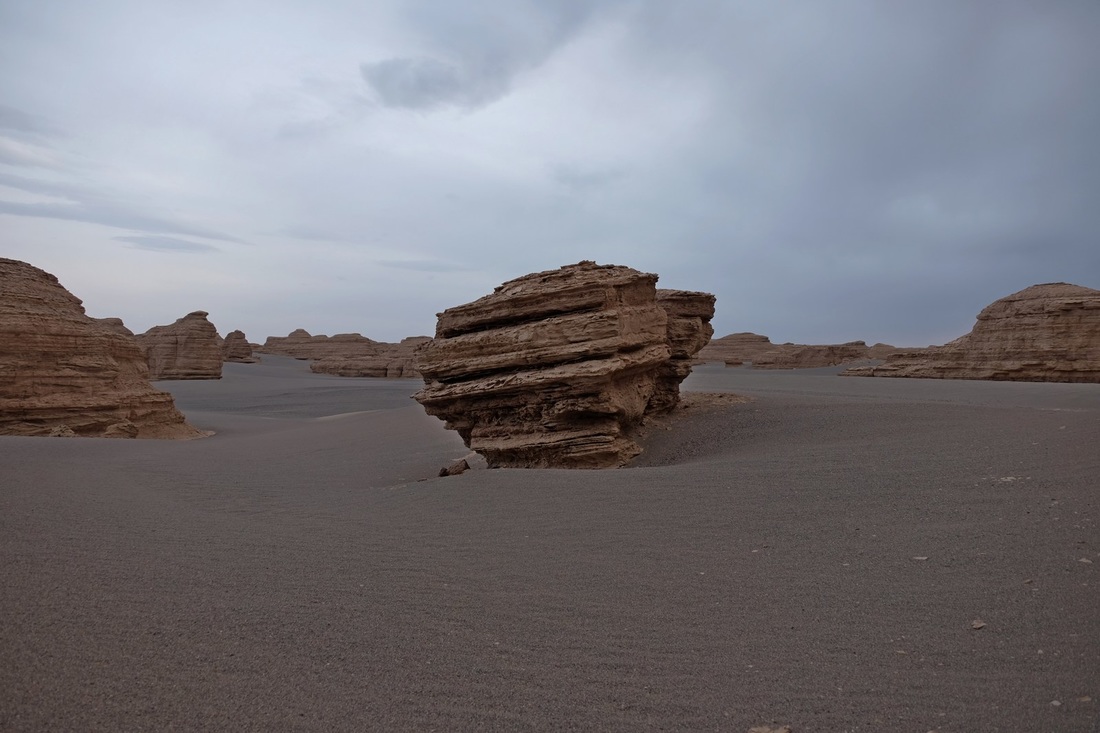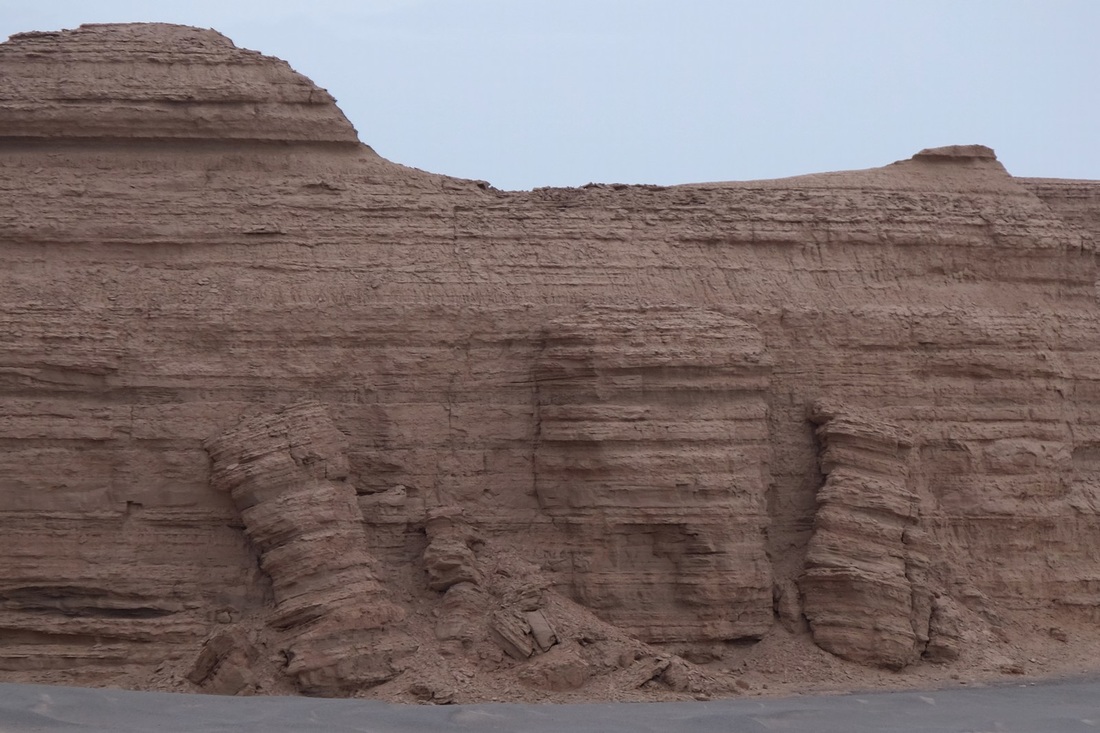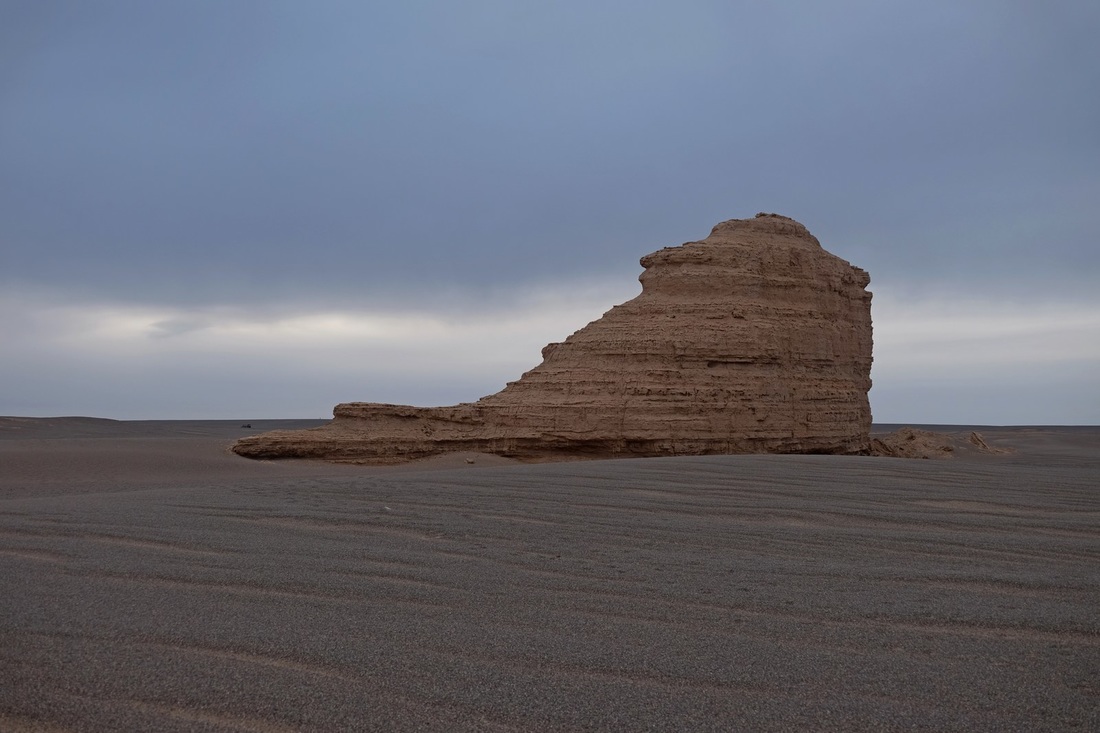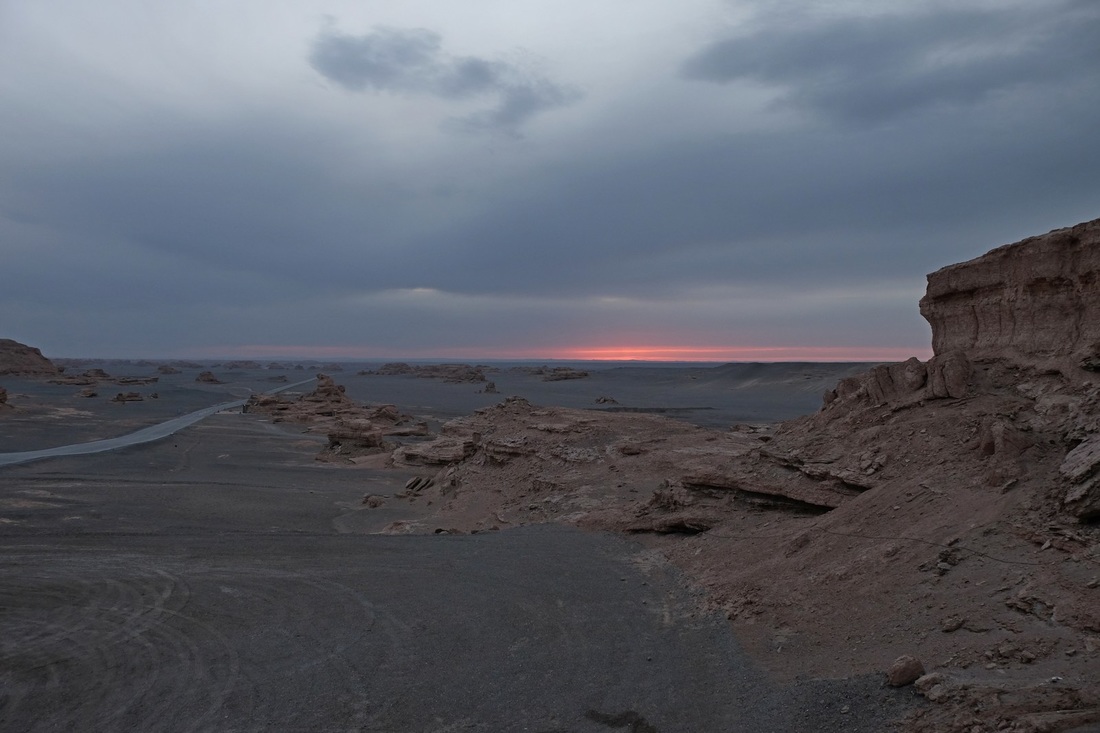So, one may ask, aside from the unnaturally hygienic nature of this little town and its oddly chirpy occupants, is there actually anything to see and do?
The answer is a resounding yes.
Mogao Caves
Dunhuang is home to the truly excellent Mogao caves, a collection of literally holes-in-walls constructed over a period of a thousand years, and filled with some of the most gorgeous Buddhist cave murals known on earth. Actually scratch that – it’s filled with some of the world’s best ancient wall paintings period. That they are in 700 caves hewn from solid sandstone 1,500 years ago, and the fact that they are brimming with religious significance only adds to their allure.
What makes them even more awesome is the world class on-site facilities which add considerable value to the entire experience, yet do not impose unnecessary distractions. The silly “Snow Land” in Xi’an’s Terracotta Army complex is a prime example of a misguided attempt at tourist-exploitation. In Mogao I was so impressed with the planetarium-like cinema with its dome shaped screen which shows great CGI renderings of the caves and its history – so good that it wouldn’t have looked out of place in Universal Studios. Another highlight for me was the small but thoughtfully curated museum which had full-scale replicas of eight caves. The quality of the replication is remarkable and has to be seen to be believed. And the toilets? Like a Shangri-La Hotel.
The Mogao caves contain exclusively Buddhist artwork which is splendidly intact. And this is unusual as the succession of different faiths and cultures over 1,500 years, spanning 10 dynasties, would have typically left their mark e.g. the clash of Hindu and Buddhist influences in the religious complex of Angkor in Cambodia, or the Pantheon in Rome, which was originally a monument dedicated to paganism, and eventually converted into a Christian church.
The only obvious defacement is actually very recent, for example, several hundred Russian soldiers were imprisoned in some of the caves in the 1920’s and they showed their displeasure by vandalising the paintings and scraping off much of the gold leaf adorning the paintings and statues. Also from the 1900’s, a series of Western “explorers” had carted off thousands of manuscripts including the priceless Diamond Sutra, the oldest (surviving) printed book in the world. It is now on display at the British Library.
Complaints? A few, but I’d be nit-picking. Firstly, absolutely no photography allowed in the caves. The few below were surreptitiously taken at waist level. Secondly, you can’t visit all the caves - many are shut to public. Thirdly, RMB240 (about USD40) is a bit steep for an admission fee, but it does come with an English-speaking guide who’s quite cute. All is forgiven then.
Dunhuang Dunes
For visitors to Western China, Dunhuang is probably the first place one would encounter a proper desert. The best part is that the sand dunes are only a 20 minute walk from the town centre. The worst part is that the admission fee is an alarming RMB120 (about USD20) – just to have the right to walk on sand. There are other, less-than-legal ways of getting in, but I wouldn’t know. Apparently there is a little side-entrance on the left-hand side of the main gate (just before the camel pens) where one would need to have RMB30 discretely folded into a tight wad. But I wouldn’t know. However one gets in, it’ll be great fun because running down a 70 degree sand dune at full pelt makes one feel like a superhero. Also there’s all sorts of (slightly touristy) stuff to do e.g. camel treks, sand boarding/surfing, 4x4 buggy rides etc. They don’t come cheap, however.
Tour of Dunhuang’s Surroundings
There’s also the full-day tour of Dunhuang’s outer rim for RMB120 (admission tickets to sights not included) which includes the Gucheng or Old City (RMB40, definitely miss-able), Western Thousand Buddha Caves (RMB30, definitely miss-able if you’re seeing Mogao, which you should), Yangguan Pass or South Pass (RMB60, miss-able), Yumenguan or Jade Gate Pass (RMB40, worthwhile), Han-dynasty wall remnants (RMB30, worthwhile), and the Yadan National Park (RMB120, the major highlight of this tour).
The above tour could be condensed into a half day tour (if you skip the miss-able ones), and still make it for the sunset (check the weather the day before) at Yadan National Park with a stunning view of its alien rock formations. A taxi can be hired for RMB300-400 for the 400+km round-trip. Otherwise, you’d have to join the group bus tour and waste a little time.
Shame that they don't allow photography inside!
Bottom: Typical multilevel structure to the caves.
If set-out side by side, the caves would cover a length of 30 kilometres!
Bottom: Remnants (unrestored, thankfully) of the Han-dynasty wall which formed part of the fortifications along with Yumen Guan and Yang Guan (South Pass).
